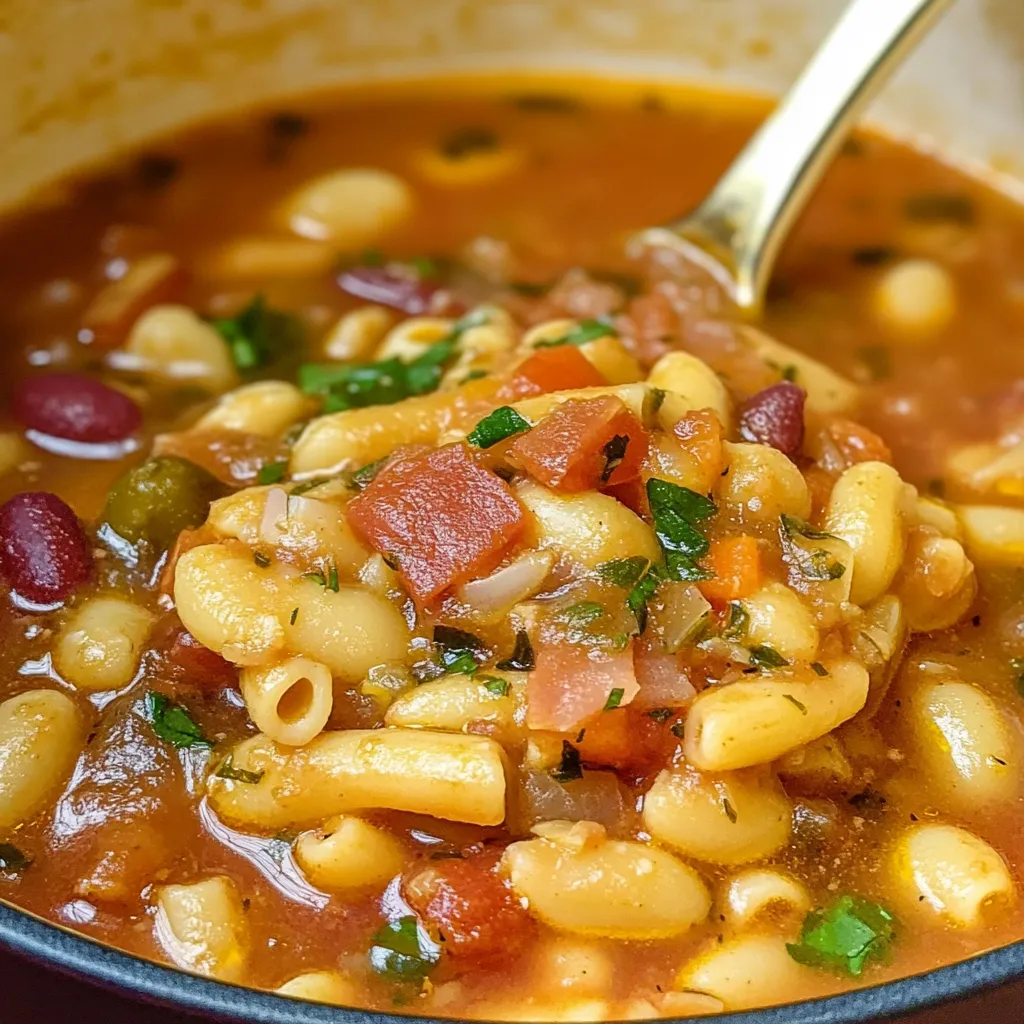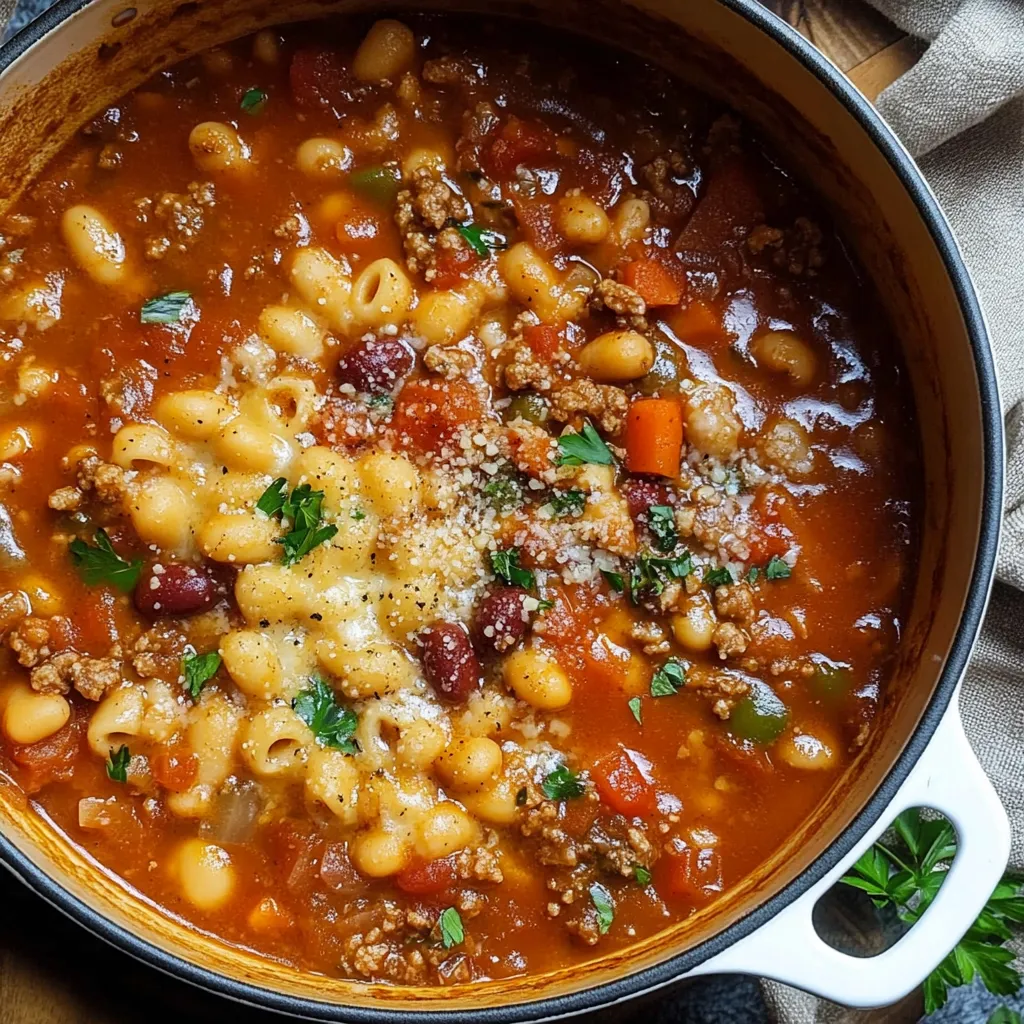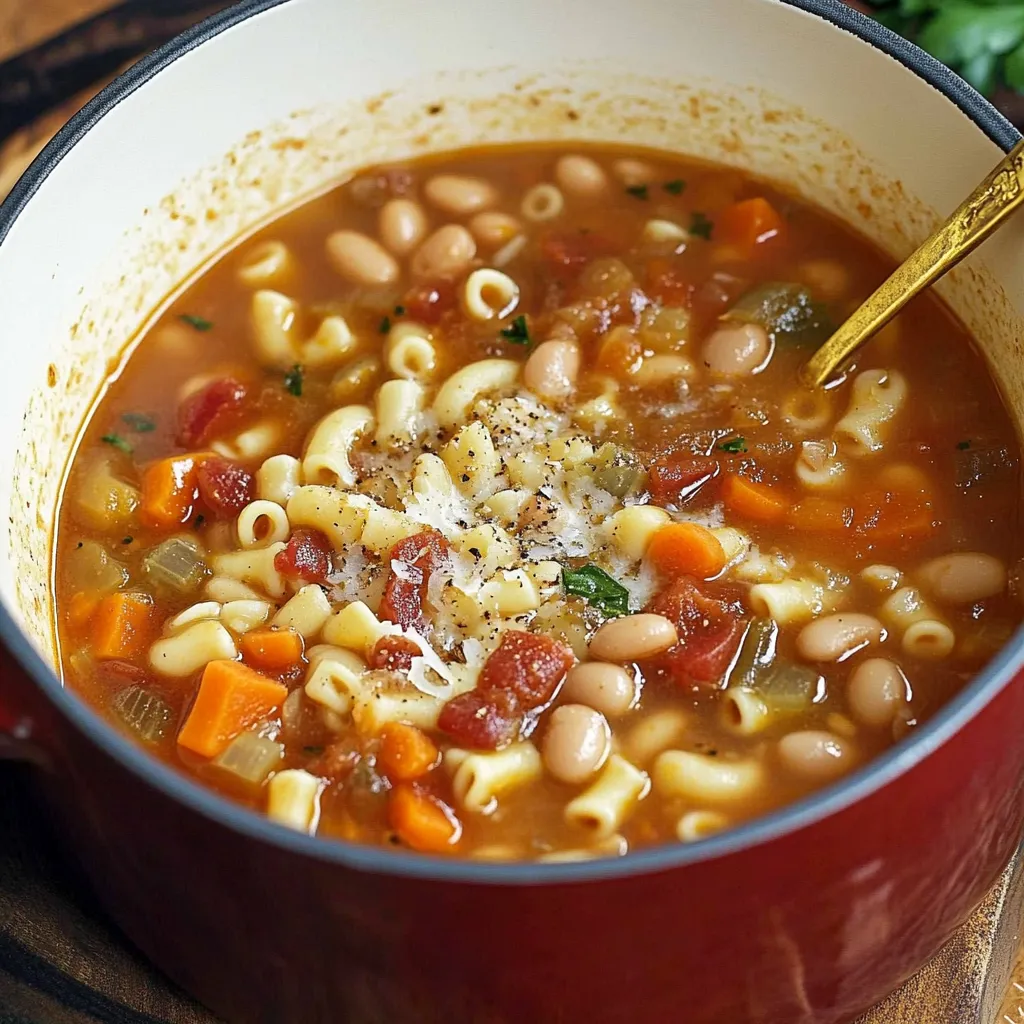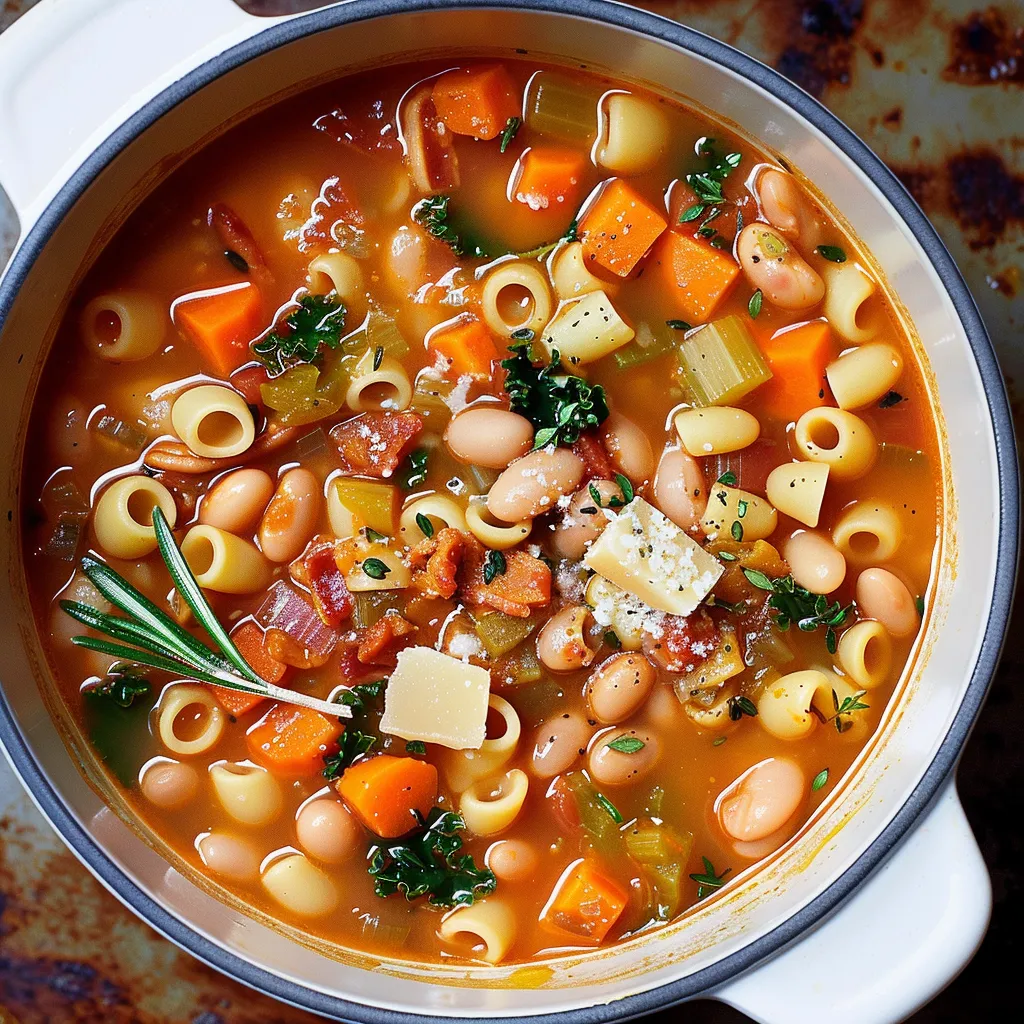 Pin
Pin
This classic Italian Pasta e Fagioli transforms humble ingredients into a soul-warming soup that's both comforting and nutritious. The combination of two types of beans, tender pasta, and aromatic vegetables creates a hearty meal that's greater than the sum of its parts. Each spoonful delivers perfectly cooked pasta, creamy beans, and vegetables in a flavorful broth enriched with herbs and optional bacon. This soup demonstrates how simple ingredients, treated with care, can create something extraordinary.
Growing up with Italian influences, I learned that the secret lies in building flavors gradually and using quality ingredients.
Essential Ingredients Selection
- Fresh aromatics create flavorful base
- Two bean varieties provide texture contrast
- Small pasta shapes hold up well in soup
- Quality broth ensures deep flavor
Choose low-sodium broth and beans to control seasoning. Fresh garlic and herbs make a noticeable difference.
Detailed Cooking Instructions
- 1. Begin with careful mise en place.
- Finely dice onion, carrots, and celery into uniform pieces (about ¼ inch) for even cooking. Mince garlic fresh rather than using pre-minced for best flavor. If using bacon, cut into small lardons. Rinse beans thoroughly in colander, checking for any debris. Having everything prepared before starting ensures smooth cooking process and proper timing. Position all ingredients within easy reach of cooking area.
- 2. Heat large Dutch oven or heavy-bottomed pot over medium heat.
- Add olive oil and wait until shimmering. Add diced onion, carrots, and celery (known as soffritto in Italian cooking), stirring occasionally until vegetables soften and onions become translucent, about 5-7 minutes. Add minced garlic in last minute to prevent burning. If using bacon, add now and cook until fat renders and bacon becomes crispy, about 3-4 minutes.
- 3. Add diced tomatoes with their juice,
- using wooden spoon to scrape any browned bits from bottom of pot - these contain essential flavor. Pour in chicken broth and bring to gentle simmer. Add both types of beans, dried herbs, red pepper flakes if using, and bouillon cube. Season with black pepper but wait on salt until end. Reduce heat to maintain gentle simmer, partially cover, and cook 15-20 minutes until vegetables are tender and flavors meld.
- 4. For pasta, you have two options:
- cook directly in soup or separately. For immediate serving, add pasta directly to simmering soup and cook until al dente, stirring occasionally to prevent sticking. For leftovers, cook pasta separately in well-salted water until just before al dente, then add to individual portions. This prevents pasta from becoming overcooked and absorbing too much broth during storage.
- 5. Final seasoning is crucial.
- Taste soup and adjust with salt, pepper, and additional herbs as needed. Remember that Parmesan will add saltiness later. For perfect consistency, soup should be thick enough to be hearty but still have enough broth to be clearly soup-like. Add additional hot broth if needed. Finish with freshly grated Parmesan and chopped parsley just before serving.

Through generations of Italian cooking, I've learned that building flavors gradually creates the most authentic result. The soffritto (sautéed vegetables) should never be rushed - it's the foundation of your soup's flavor.

Storage Solutions
Store soup and pasta separately in airtight containers up to 5 days in refrigerator. If already combined, soup will thicken significantly as pasta continues absorbing broth. When reheating, add warm broth to reach desired consistency. For freezing, store soup base without pasta up to 3 months. Thaw overnight in refrigerator, reheat gently, and add freshly cooked pasta. Always bring to room temperature before refrigerating.
Serving Suggestions
Serve hot with extra grated Parmesan, fresh parsley, and drizzle of high-quality olive oil. Accompany with crusty Italian bread or garlic bread for soaking up broth. For complete meal, pair with simple green salad dressed with vinaigrette. Consider offering red pepper flakes and extra black pepper at table for customization.
Troubleshooting Tips
If soup becomes too thick, thin gradually with hot broth or water. For too-thin soup, simmer uncovered until reduced to desired consistency. When pasta overcooks, try adding small amount of fresh pasta to refresh texture. If beans are too firm, continue simmering until tender. Balance acidity from tomatoes with pinch of sugar if needed.
Make-Ahead Strategies
Prepare vegetables and measure ingredients day before. Make soup base without pasta up to 2 days ahead. Cook pasta fresh when ready to serve. For entertaining, have all components ready and combine just before serving. Keep extra hot broth ready for adjusting consistency.
Recipe Variations
Consider adding spinach or kale in final minutes. Experiment with different bean combinations like borlotti or great northern. For meat lovers, add Italian sausage along with bacon. Vegetarian version works beautifully with vegetable broth and without bacon. Some regions add rosemary or sage - adjust herbs to your taste. The basic method remains consistent while allowing for personal touches.

Recipe FAQs
- → Can I make this vegetarian?
- Yes, skip the bacon and use vegetable broth instead of chicken broth
- → What if I can't find ditalini pasta?
- Any small pasta like small shells, orzo, or small elbows works well
- → Why is my soup too thick?
- The pasta absorbs liquid as it cooks - add more broth to reach desired consistency
- → Can I use different beans?
- Yes, any combination of white beans, kidney beans, or navy beans works well
- → How long does it keep?
- Stores well in fridge for 3-4 days, though pasta may soften
